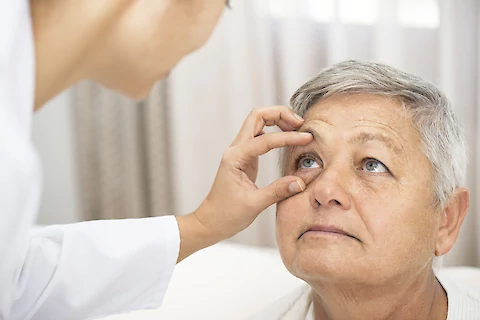
Many of us are spending more and more time in front of screens. Whether for keeping in touch with loved ones, watching our favorite shows, or even reading the news, screens have become an integral part of our lives. However, this increased screen time can lead to a common and often overlooked issue: eye strain. Seniors, in particular, may be more susceptible to experiencing discomfort due to eye strain from excessive screen use. Let's unpack everything you need to know about eye strain and screen time, discussing the common symptoms and offering practical strategies to help keep your eyes healthy. Learn how to make the most of our digital lives without compromising visual comfort.
What You Need to Know About Eye Strain
This might surprise you, but screen time doesn't just strain our minds. It places a lot of stress on our eyes, too. Eye strain is when your eyes get tired after intense use, such as spending long hours in front of a screen. For our senior loved ones, eye strain can be incredibly taxing.
What are the Symptoms of Eye Strain?
The symptoms of eye strain can vary from person to person, but there are a few common signs to look out for. Dry eyes, often accompanied by a stinging or burning sensation, can clearly indicate eye strain. Blurred vision or headaches after screen use can also be telltale signs. Seniors may not always be able to articulate their physical symptoms, so caregivers and family members need to watch out for these signs.
How You Can Help Mitigate Eye Strain
We can help prevent or lessen senior eye strain for seniors. Encourage your senior loved ones to take regular breaks from screens. A simple rule to remember is the 20-20-20 rule: every 20 minutes, take a 20-second break and look at something 20 feet away. This helps rest the eyes and reduce strain.
Next, consider the environment. Ideal lighting conditions can significantly reduce eye strain. Ensure the room is well-lit, and avoid using digital devices in dim lighting. Also, positioning the device correctly makes a difference. The device screen should be slightly below eye level and about an arm's length away.
Seeking Professional Help for Eye Strain
Lastly, it's essential not to ignore signs of discomfort. If your senior loved one's condition doesn't improve after implementing these strategies, it might be time to seek professional help. After all, there's no substitute for expert advice and proper medical attention. Their eye doctor may be able to offer additional strategies to prevent eye strain and check for underlying conditions that may be making their eye strain worse.
We Help Support Senior Eye Health
While embracing the digital world brings many benefits, it also requires us to be mindful of our health. By understanding eye strain, recognizing its symptoms, and implementing strategies to minimize it, seniors can enjoy screen time without compromising their visual health.
Contact us if you are located in Austin, Cedar Park, or Lakeway and have concerns about your senior loved one's eye health. We're here to help. Let's work together to keep those eyes happy and healthy.